|
The Golden Shadow Last week in "Befriending Our Shadow", an on-line doll making shadow course I am currently leading, participants took part in a guided visualization to meet a guide, possibly someone from their lives, a guardian angel or a representation of their "highest self." As they visited with this guide, they were asked the question, "what would it be like to be seen by the eyes of love." This meditation came from a wonderful book that I had recently been introduced to called "Your Resonant Self" by Sarah Peyton. As in the past, this meditation brought up strong emotions. For some, it was a reminder of a connection with a source greater than themselves, that they had forgotten about but were now reconnected with in a very powerful way. For others, it brought up grief, as they began to connect with a loving presence that they had not experienced to date in their lives or were only just beginning to come in contact with. Or anywhere along the spectrum from those two responses. This reminds me again, of the quote from Marianne Williamson, "our deepest fear is not that we are inadequate. Our deepest fear is that we are powerful beyond measure. It is our light, not our darkness that most frightens us." In a way, to be in the presence of such deep unconditional love, is like being in the presence of our "golden shadow," that part of ourselves that we aren't ready to acknowledge and which includes our very best and highest qualities, including our abilities to love and to love ourselves, In a way, this loving of ourselves is the most important part of shadow work. The more we can accept ourselves as beings of light, the easier it is to bring all the scary, shadow parts of ourselves into the fold. Enduring the Beams of Love One of my favorite authors, Anne Lamott, puts it this way, (in turn quoting poet William Blake) “We are put on this Earth to learn to endure the beams of Love.” Anne Lamott talks of having to remind herself of this task frequently. It is so easy to get sidetracked by the day-to-day challenges of life and to forget what this quote is alluding to, that we are all already whole, and deserving of love. I know you already know all of this but like many truths, at least for me, I can't be reminded enough. The image above by Hildegarde of Bingen, is a visual representation of one of her mystical visions. She started seeing these visions at age 4, always with eyes wide open and in a conscious state. In this image, there is a balance between a spiritual experience of connection with "soul" or "living light" on one side, with the golden radiance of soul connecting directly into the womb of the resting woman. The other side represents the challenges of "earthly life." Hildegarde of Bingen is one of my favorite mystics. I go to her for inspiration. To me, this image of the golden light reminds me of the beams of love that William Blake talks about. Below I share some representative images by William Blake, poet, mystic, artist of the 1800's. To me, they are another way of representing that fantastical vision that Hildegarde von Bingen also spoke of, and which demonstrate so vividly our connection to a loving force greater than ourselves. I hope that this very brief introduction to some of my favorite visionary artists will inspire you to take a deeper dive into their work. I also hope that they inspire you to consider the ways in which you too are seen by the eyes of love always. Explorations in the Studio
Below is an image of what I am working on in my studio currently. Inspired by my doll-making mentor, Barb Kobe. I have been having a great deal of fun exploring a new, to me, medium of paper clay, to build faces, feet and hands. I am connecting these paper clay body parts to armatures made of wire, stick or even rolled up paper from paper bags. The images show some of the progression in how I went about putting the doll together. She is a powerful crone and has something to do with finding one's way through the dark. She is not finished. I am working on embellishing her with beads and adding a cloak. I tend to post more frequently on Instagram about my process in my studio. You can find these posts here in case you are interested.
0 Comments
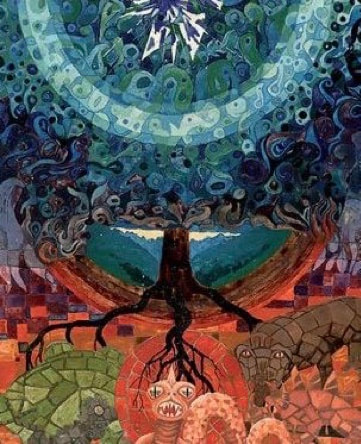 Image from Carl Jung's "Red Book" his private musings on dreams and overwhelming imagery that flooded his mind in the chaotic time just before WWI. He didn't want to let it be publicly seen, so it was literally hidden in a Swiss vault until his descendants allowed it to be reproduced and published in 2009 "Silly me, I thought this was a doll-making workshop!" These were the words of one of the participants in the most recent version of the shadow doll workshop, "Befriending Our Shadow" that is currently going on. This aha moment became a sort of a theme in one of the beginning sessions of the workshop, the discovery on the part of several participants that this was going to be more than they had originally signed up for. And yet, that this was going to be deep learning in a different and possibly more rewarding way than a workshop in which they would be simply learning sewing and doll construction techniques. We had been talking about the "trickster" nature of the shadow, how impossible it is to see "the lion that has swallowed you." And truly, it is mostly impossible to see one's own shadow. This participant went on to say that she was grateful to have stumbled into the often confusing, and yet constantly surprising path of self-discover that is shadow work. Also surprising perhaps, in a process that would seem to focus on the dark and scary, is that there is also a lot of laughter in this group. It takes a certain amount of self-trust and a willingness to put aside certainties to do this work. This promises to be a courageous and self-aware group of women who are well able to take on this task. Though they may feel a bit daunted, in their words, they are "all in!" And they have a sense of humor about it all. Our shock on first encountering the shadow In What the Shadow Knows: An Interview with John A, Sanford (in Meeting the Shadow: The Hidden Power of the Dark Side of Human Nature) Sanford says "when one first sees the shadow clearly, one is more or less aghast." Our defenses "melt away" and we are sometimes plunged into a sort of depression. This is what I meant earlier by the trickster nature of the shadow. It pulls the rug out from under us, but as we lose our footing, we begin to discover the instability of what we were standing on, like falling through old, rotten floorboards of an old house. We are in for a big renovation project. But what possibilities!... if we are willing to roll up our sleeves and dig into the work of renovations. Sanford goes on in this article, to describe the benefits of getting more comfortable with the shadow. He says that as we let go of our false self, that self that we put forward into the world in order to fit into outward structures and expectations, we begin to come into contact with something much truer and more reliable. But it is a weird and contradictory path. In our western culture, we are inundated with false images of who and what we are supposed to be. We need to step away from this constant bombardment in order to tune inward and figure out who we really are and what we really stand for.... Jung himself formulated his theories out of a process of "active imagination," as a way to make sense of a disordered and disintegrating reality... The image at the top of this post is from Jung's Red Book, a series of paintings that he created during a time when his internal and external world was collapsing. He was ostracized from his mentor, Sigmund Freud and Freud's followers, after Jung claimed the importance of the spiritual realm in the process of personal healing (oversimplifying here of course to make a point) His marriage was disintegrating and he, as a sensitive and intuitive being, was feeling and witnessing the ominous signs of what was to be WWI and then WWII. Using a process he called "active imagination," he allowed these waking dream images to pour out onto the page and turn into a sort of hero's journey of personal integration and discovery. As an artist and doll-maker, I am moved by his use of art as a way to make sense out of his world. He would repeatedly tell his followers apparently to not copy him. He would tell them they needed to create their own Red Books. As an artist and as explorers of my psyche, I take to task his exhortation to develop and discover my own personal iconography and I hope to inspire others to do the same-see my recent paintings above and dolls below. Still with me? Thanks
So what does this all mean? It means that I want to encourage you to create your own Red Book as well. It doesn't have to be in painting or doll making, Instead choose whatever medium speaks to you. And that could be anything from writing some lines in a journal, sketching images or lying on your back and seeing images in the clouds. It is worth it to your mental health to find your own meaning, your own personal iconography to make sense out of your own life. I leave you with a poem by Wendell Berry that captures some of the sense of what it is like to discover your shadow: I Go Among Trees by Wendell Berry I go among trees and sit still. All my stirring becomes quiet around me like circles on water. My tasks lie in their places where I left them, asleep like cattle. Then what is afraid of me comes and lives a while in my sight. What it fears in me leaves me, and the fear of me leaves it. It sings, and I hear its song. Then what I am afraid of comes. I live for a while in its sight. What I fear in it leaves it, and the fear of it leaves me. It sings, and I hear its song. After days of labor, mute in my consternations, I hear my song at last, and I sing it. As we sing, the day turns, the trees move. ~ Wendell Berry from Sabbaths Why Flip Dolls? Still asking this question... Back in 2016, I wrote a blog post here about flip dolls and it is still the post that gets the most comments on my website. I asked the question back then, why flip dolls? and it seems I am asking it still. Above is an example of a flip doll from 1901, a time when these Black "Mammy" vs young girl flip dolls were very popular. This one was made by Albert Bruckner, a designer who capitulated on the interest in flip dolls by creating a technique that allowed the doll faces to be printed on fabric and more easily reproduced. This doll was then mass produced and was very popular in its time, though it reinforced the unfortunate stereotype of the "Black Mammy." This flip doll harkened back to the origin of flip dolls, at least in the U.S., of a doll that was made by slave mothers for their daughters during the slave era in the south of this country. See the article in the link above, for more details about this sad origin story. The image below maybe be closer to what those original dolls looked like, though there are not many images available. I've been fascinated by flip dolls ever since discovering them many years ago and have wanted to transcend and "revision" their function into something more hopeful. To that end I have challenged artists to make flip dolls, worked with homeless women, teaching them to make flip dolls, made many of my own and more recently, used the two-sided nature of the flip dolls as a vehicle to explore the "shadow." What is the "shadow"? One of the most obvious characteristics of the flip doll is that it flips, that is it turns upside down so that what was once the top of the doll becomes the bottom. Not only that, the two sides are connected so that whichever side is up one way is upside down the other. When I thought about the ways that the two-sided nature of the doll could be used to explore story, I realized that it would be perfect to explore a particular type of story and that is the story of the shadow. Throughout history, we have been fascinated by our shadows in different ways. In ancient times, the shadow was what lurked beyond the circle of light cast by the bonfire that we sat around to keep ourselves warm and to tell stories around. Hidden in the darkness beyond the firelight were the scary things that could harm us-mammoths, saber toothed tigers and all manner of "monsters." More recently, with the invention of psychology, we began to discover the "monsters" within ourselves. Though of course shadow was known through myths, fairy tales, and many other forms of writing, psychology made it more specific. And especially psychologist and writer, Carl Jung made it easier to understand what it might mean to have a shadow within ourselves, a part of our personality that was made up of all that we wanted to hide from ourselves. Image of one side of an early handmade flip doll from United Federation of Doll Clubs DVD. She is an 11 inch doll with hand embroidered features. The DVD narration states that this doll may have been owned by a slave girl in the South. She is very well worn. (Note: I was not able to find the link to this video for this article but you can try contacting the United Federation of Doll Clubs to ask.) Flip dolls and the shadow-homage to the origin of the flip doll So, when I thought about bringing together the shadow and the flip doll in the form of shadow doll workshops, I was guided by a couple of intentions. First, I wanted to honor the origin of the flip doll, with its very simple materials, by encouraging participants in these workshops to make dolls out simple cotton cloth material. The women who first made these dolls did not have access to a wide range of materials. They used what was to hand and mostly that was scraps of cloth from feed bags, such as those used for grain or flour. And then these dolls were stuffed with leftover scraps or maybe remnants of cotton. These women did want the dolls to be soft, so that they would be comforting to hold. In the shadow doll workshops that I lead, I encourage participants to use a simple cloth doll design to make their flip dolls, though they are free to also use their materials. Below is a flip doll created by a participant in the first on-line Befriending Our Shadow flip doll workshop, Naomi Zow, using a cloth pattern but with her own embellishments and story. "Light/Inner Guide vs Shadow/Inner Critic" Two sides of flip doll created by Befriending Our Shadow participant, Naomi Zow. Flip dolls-both shadow and guardian within one doll Delving into one's shadow can be a scary thing. When we have hidden away parts of ourselves, it can be scary to start to look at them again. And often, the deeper these parts are hidden, the more we may have developed resentful and sometimes even angry feelings towards these parts. Yet, we know on some level that what was hidden away contains our power within it, so we know it is worth the work and the fear. But we need a guide along this journey. The wonderful ability of the flip doll to contain opposites, grief and joy, darkness and light, comfort and fear, makes it possible to combine the shadow with its "opposite" in one doll. This leads to my second intention, to use the two sided nature of the doll as a way to allow both the guardian and the shadow to be connected in one doll. However the tricky nature of this work means that we have to be willing to accept the twists and turns in the road as we go forward. Sometimes what starts of being the shadow, the "monster," can turn into our biggest ally. I have seen this happen time and time again, both in my own work and in the work of participants in my workshops. Below is a wonderful example of a cloth shadow flip doll from the second Befriending Our Shadow workshop. Joanne Delaplaine found that the "monster" octopus transformed into an ally in this doll. Ms. Peacekeepr/Octopus Woman, two sides of a flip doll by Befriending Our Shadow participant Joanne Delaplaine The journey continues... I don't think I am ever going to get tired of working with, learning about and teaching others to make flip dolls. Last week was the start of the third version of Befriending Our Shadow, an intensive eight week exploration of the shadow within the intimacy of small groups. I am very excited about the wonderful, brave women who have shown up this time to take this class. I am looking forward to seeing what comes up for them and where their journeys take them. I feel very lucky. Here's a little video about making a tiny flip doll in case you want to experiment yourself!
|
ErikaI've been making dolls for about ten years now. I believe that dolls serve as representations and reminders of the best part of ourselves. I am excited to share with you here my learnings about new methods and techniques for doll making and healing. So glad you are here! Categories |
Proudly powered by Weebly



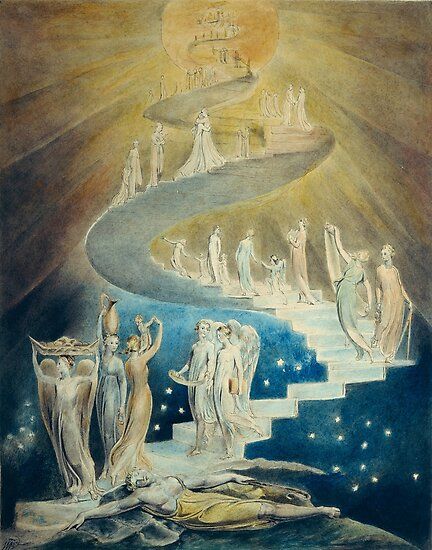

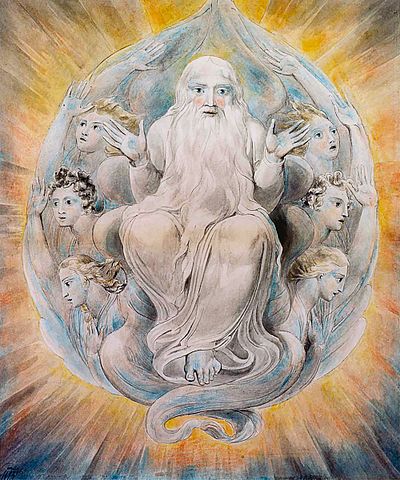
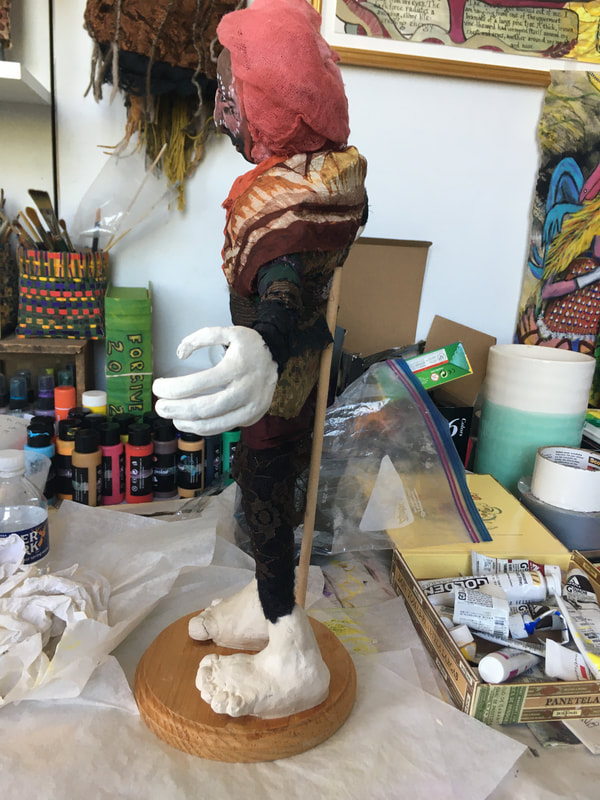

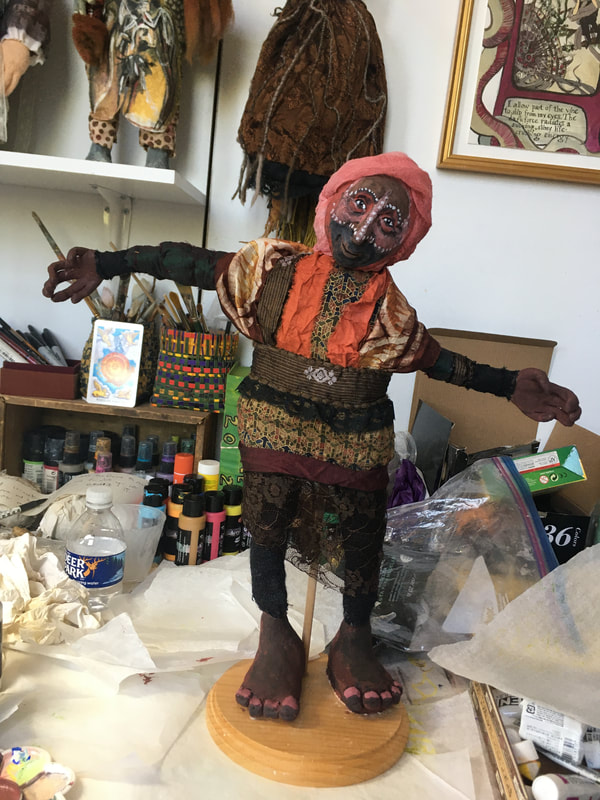
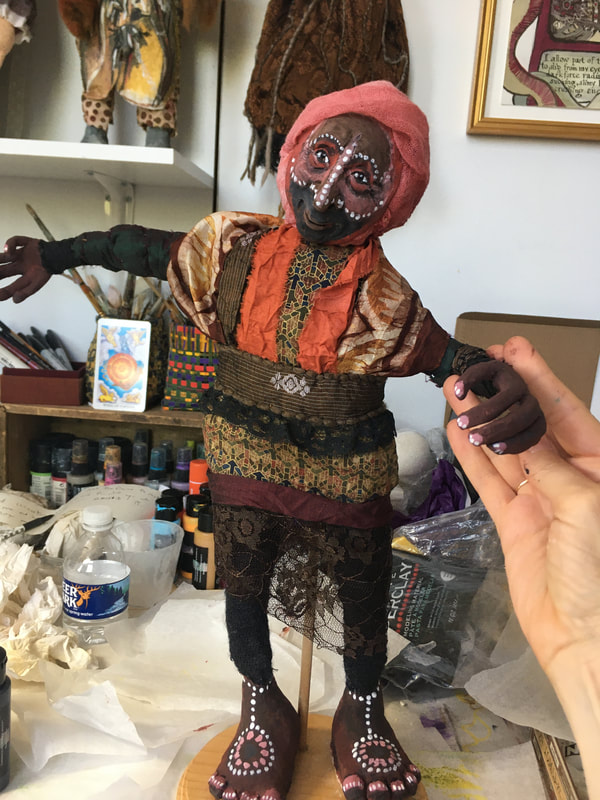

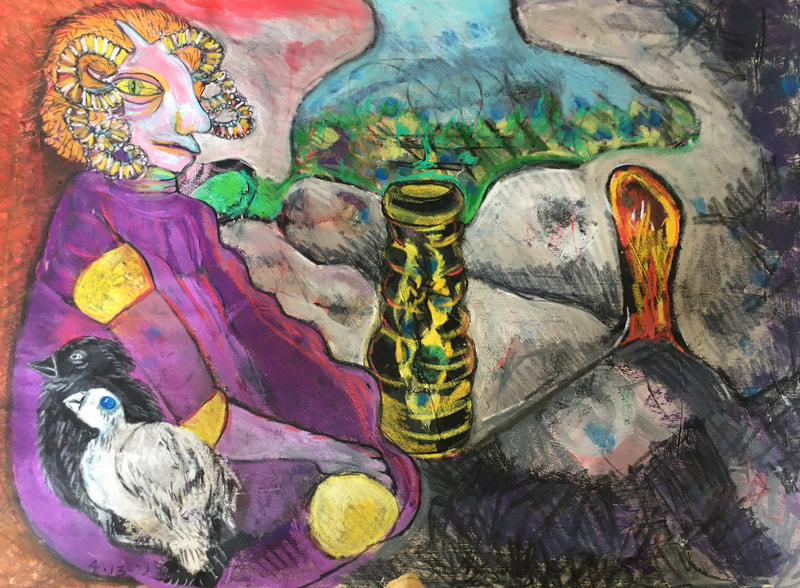
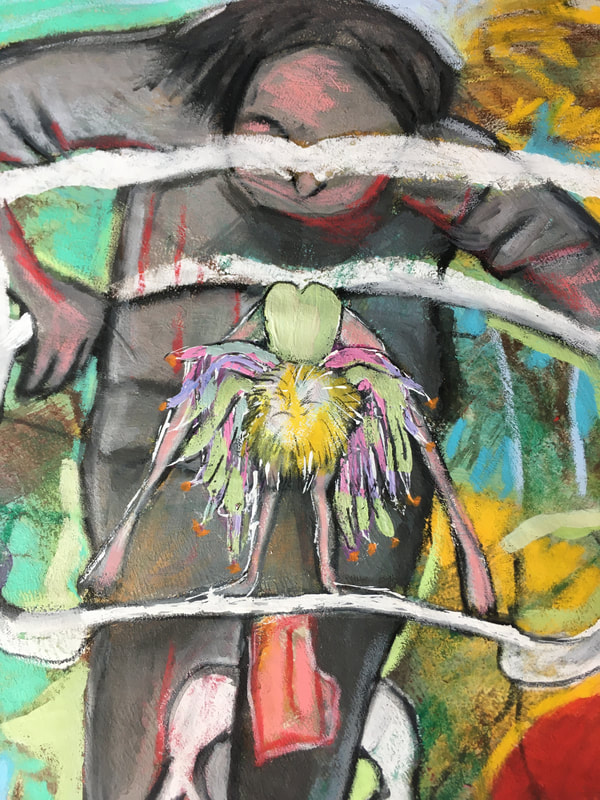


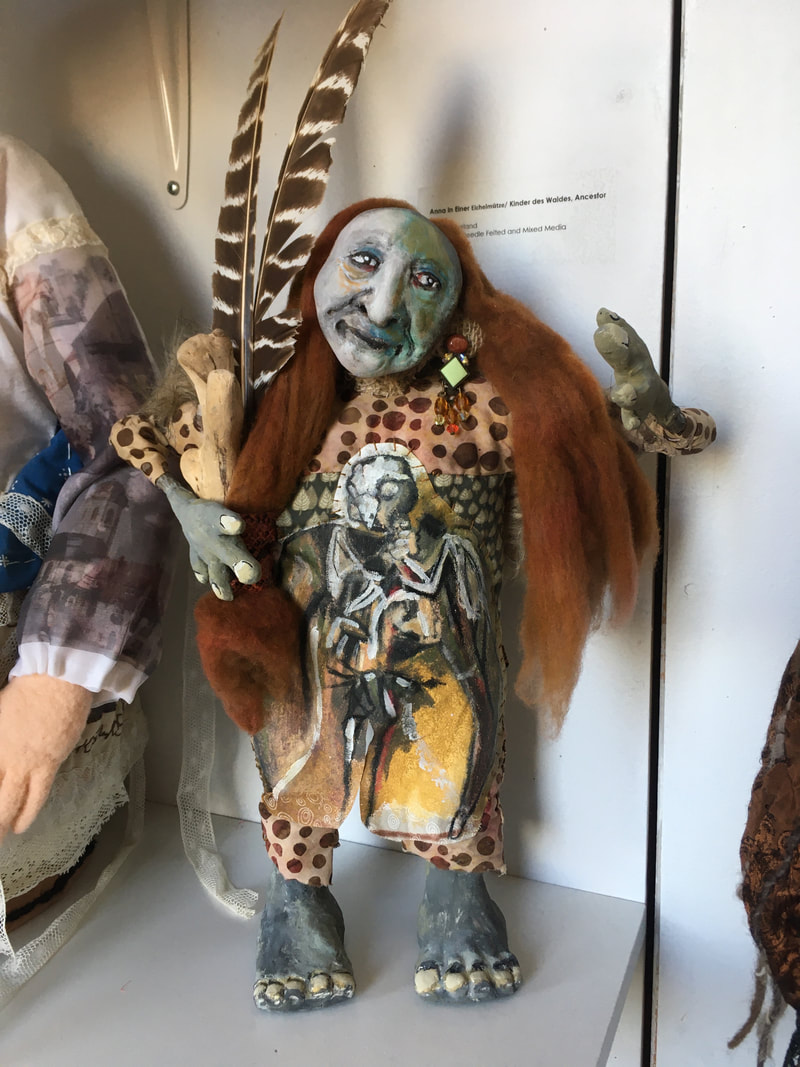




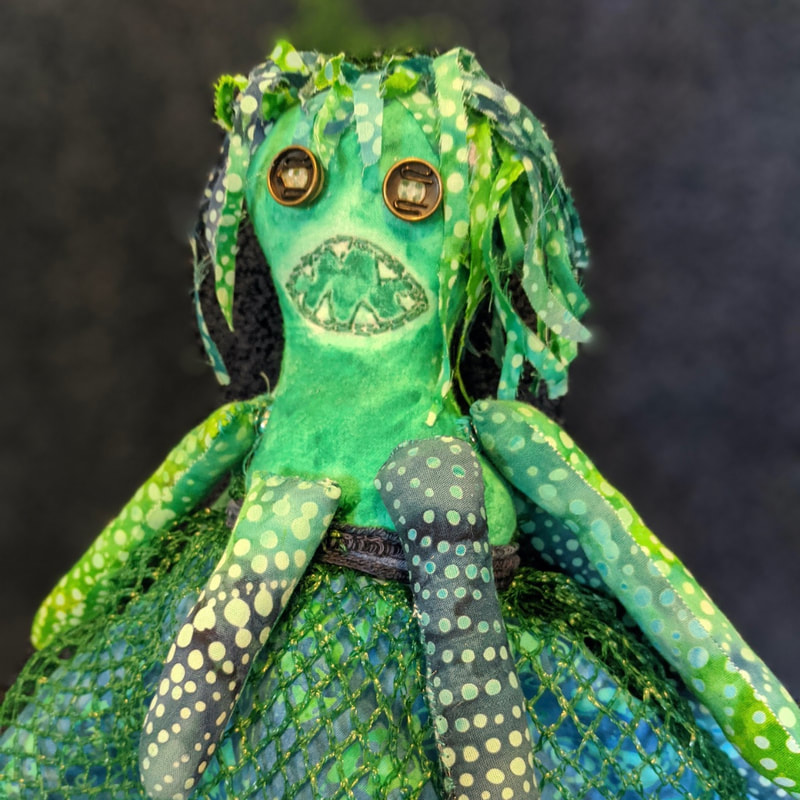
 RSS Feed
RSS Feed